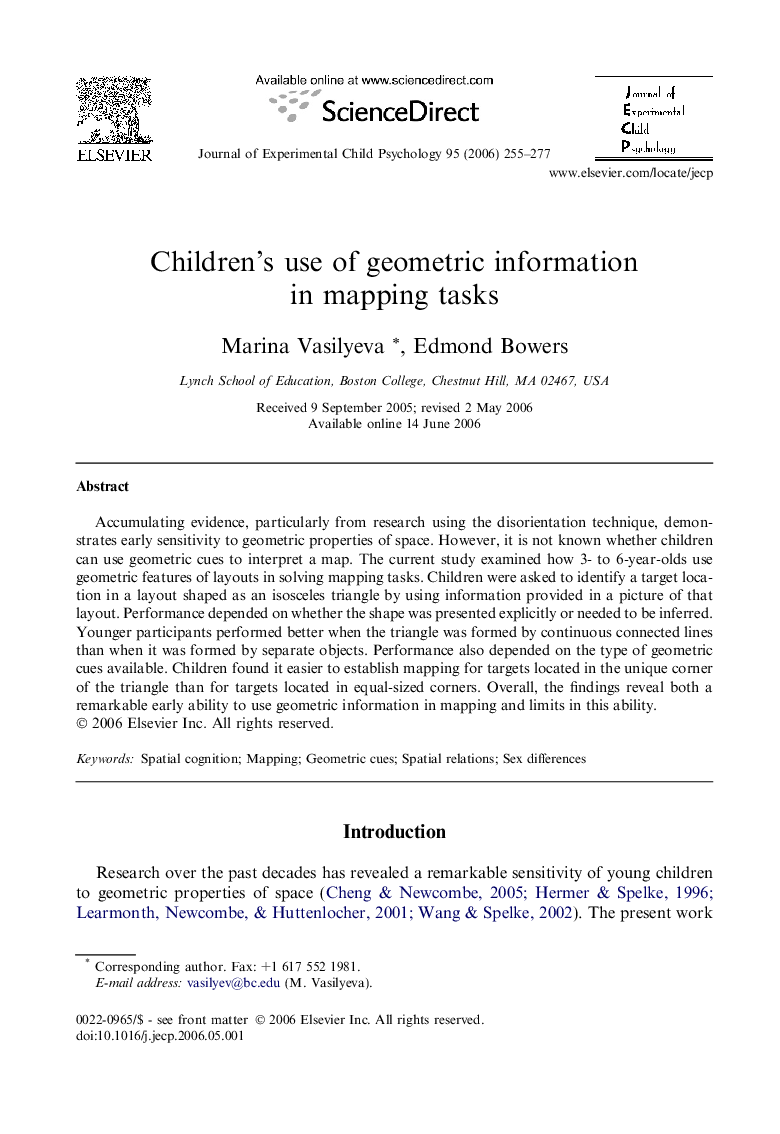| Article ID | Journal | Published Year | Pages | File Type |
|---|---|---|---|---|
| 918779 | Journal of Experimental Child Psychology | 2006 | 23 Pages |
Accumulating evidence, particularly from research using the disorientation technique, demonstrates early sensitivity to geometric properties of space. However, it is not known whether children can use geometric cues to interpret a map. The current study examined how 3- to 6-year-olds use geometric features of layouts in solving mapping tasks. Children were asked to identify a target location in a layout shaped as an isosceles triangle by using information provided in a picture of that layout. Performance depended on whether the shape was presented explicitly or needed to be inferred. Younger participants performed better when the triangle was formed by continuous connected lines than when it was formed by separate objects. Performance also depended on the type of geometric cues available. Children found it easier to establish mapping for targets located in the unique corner of the triangle than for targets located in equal-sized corners. Overall, the findings reveal both a remarkable early ability to use geometric information in mapping and limits in this ability.
